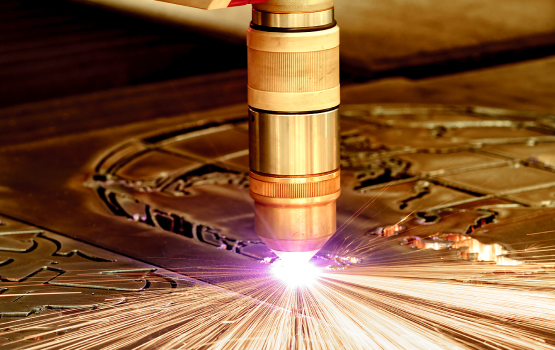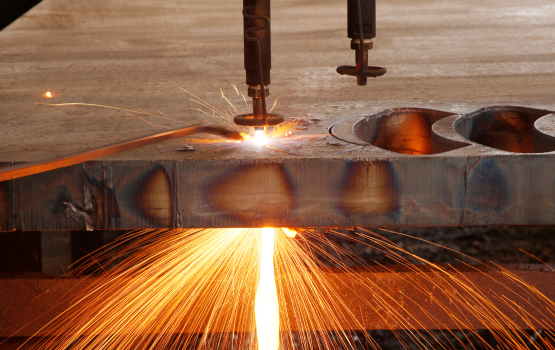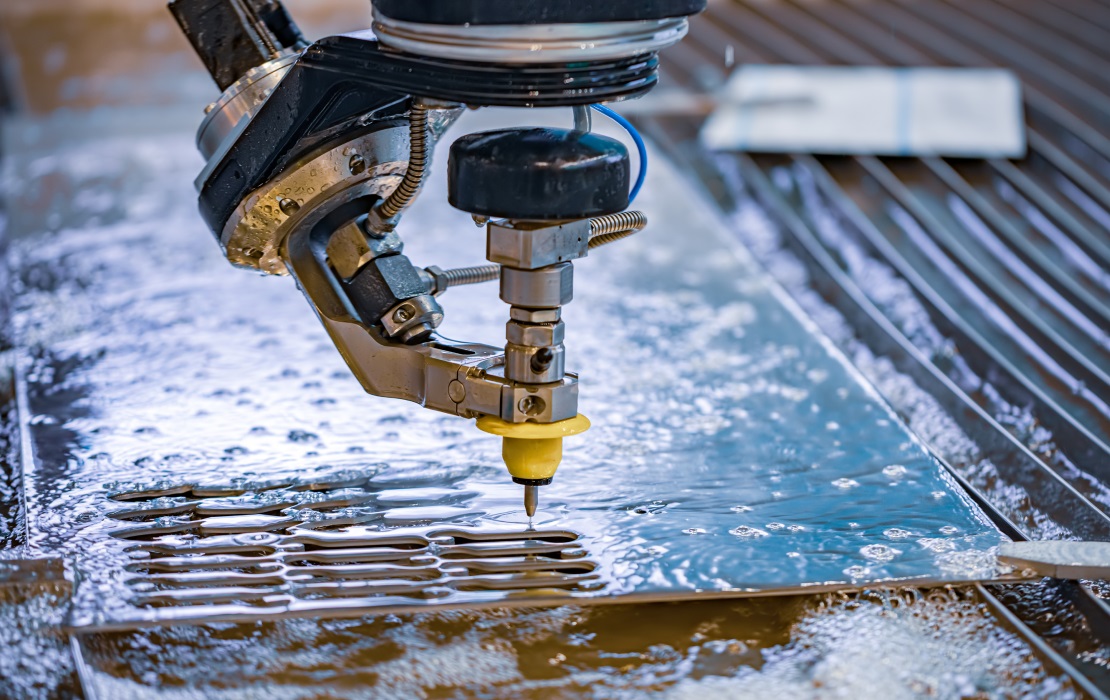

Laser cutting is a technology that uses a laser to vaporize materials, resulting in a cut edge. A commercial laser used for cutting materials uses a motion control system to follow a CNC or G-code of the pattern to be cut onto the material. The focused laser beam is directed at the material, which then either melts, burns, vaporizes away, or is blown away by a jet of gas, leaving an edge with a high-quality surface finish.

Maximum Bed size of

(Carbon steel)
(Stainless steel)
(Aluminum)
(Copper & alloys)

 Do you cut anything other than metal?
Do you cut anything other than metal?
No, not for now. We understand that many of you want to laser cut MDF, acrylic, wood, and other materials. As a result, we intend to include these resources in our selection in the future.
 What materials should not be cut with A laser cutter?
What materials should not be cut with A laser cutter?
Many materials should not be cut with a laser, due to their various properties. Cutting a PVC component using laser leads to the emission of toxic fumes. ABS and HDPE melt and catch fire, as they are made from highly flammable materials.
 Can you manufacture a one-of-a-kind
Can you manufacture a one-of-a-kind Yes, because there is no minimum order size restriction. Simply submit your CAD files to our system to obtain a quote.

Plasma cutting is a melting process in which a jet of ionised gas at high temperature is used to melt and expel material from the cut. An electrical arc is struck between an electrode and a workpiece which generates the heat . This heat melts the metal and the gas flow ejects it from the cut. Plasma gases are usually argon, argon/hydrogen or nitrogen. Use of compressed air makes this variant of the plasma process highly competitive with the oxy-fuel process.

Maximum Bed size of

(Carbon steel)
(Stainless steel)
(Aluminum)

 Can plasma cut through Glass and wood?
Can plasma cut through Glass and wood?
As glass and wood are not electrically conductive, it cannot be cut using a plasma cutter.

Oxy-fuel cutting is a thermal cutting process that uses oxygen and fuel gas (such as acetylene, propane, MAPP, propylene and natural gas) to cut through materials. Preheat flames are used to raise the surface or edge of the material to approximately 1,800 degrees F. High-pressure stream of oxygen is then directed towards that heated section of steel. As the steel is oxidized , the oxygen stream helps blow away the slag and the cut occurs . The oxyfuel process is the most widely used industrial thermal cutting process because it can cut various thicknesses, the equipment is low cost and can be used manually or mechanized.
There are several fuel gas and nozzle design options that can significantly enhance performance in terms of cut quality and cutting speed. This is one of the cheapest cutting solutions which is widely used across the industry to cut various materials . Apart from waterjet cutting which is relatively more expensive , oxy fuel cutting is the only available source of cutting which is capable of cutting very thick materials . Our manufacturing partners have the capability to cut up to 150mm.

Maximum Bed size of

(Carbon steel)

 What type of material cannot be cut using oxy-fuel cutting?
What type of material cannot be cut using oxy-fuel cutting?
Only ferrous materials can be cut using this process, so non-ferrous materials like aluminium, copper and stainless steel cannot be cut.
 What gas source is recommended for mechanized oxyfuel cutting tables?
What gas source is recommended for mechanized oxyfuel cutting tables?
Most shops with access to acetylene supply choose to go this route, and it's very affordable. Propane is the next most common choice if they don't have access to this gas .
 Can we cut very thin materials using oxyfuel cutting method ?
Can we cut very thin materials using oxyfuel cutting method ?
Oxy-fuel is good for thick metals, but loses some of its efficiency and benefits on the thinner metals. That's where you start looking at laser and plasma cutting more closely. For the really thick stuff, shops look at oxy-fuel technology on their mechanized tables.

Water-jet cutting is based on a very simple functional principle. When a fine jet of water hits the surface of a workpiece at high speed it causes material removal and separates the material. To generate the required high-pressure water jet, a high-pressure pump brings the water to a pressure of up to several thousand bar and directs it to the cutting head.
Depending on the material to be cut, the water can also be mixed with an abrasive. The water with a jet diameter of 0.1 to 0.5 millimeters emerges from a fine nozzle opening at the cutting head.
The blasting capacity depends on the pressure of the water and the diameter of the nozzle opening. The water jet separates the material particles near the surface and causes a stress-free cutting process without heat ingression into the material. Depending on the nature of the water jet and the hardness and thickness of the material, different cutting depths and speeds can be achieved.
Waterjet cutting process cuts through the material without generating any heat affected zone in the component . Customers looking to cut through very thick materials including steel , wood and stone prefer this cutting process . This process uses a high pressure jet of water or abrasive mixed water that will pierce through the material . CNC controlled movement of this jet will cut the desired shapes from the material.

Maximum Bed size of

(Carbon steel)
(Stainless steel)
(Aluminum)
(Copper & alloys)

 What materials can be cut using water jet?
What materials can be cut using water jet?
Water jet is a versatile cutting process that can cut a wide range of materials using pressurized water and abrasive. It is ideal for very thick and fragile materials also. Here are some of the materials that water jet can cut:
 Can I cut thick materials with water jet?
Can I cut thick materials with water jet?
Yes, you can cut thick materials which is the main advantage of Water jet cutting. In fact you can cut upto 300mm depending on the material being cut. But the accuracy reduces as the thickness of the workpiece increases
 What’s the difference between Pure and Abrasive Water Jets?
What’s the difference between Pure and Abrasive Water Jets?
Most water jet cutting machines use abrasive components. They are ideal for cutting hard materials. For example, rock, glass, and metals will need an abrasive for a precise cut. Garnet is the most commonly used abrasive because it’s tough and is readily available.
But abrasive is not mandatory for cutting all types of components. If you are cutting soft and medium-hard materials such as foam rubber, you can use a pure water jet machine.